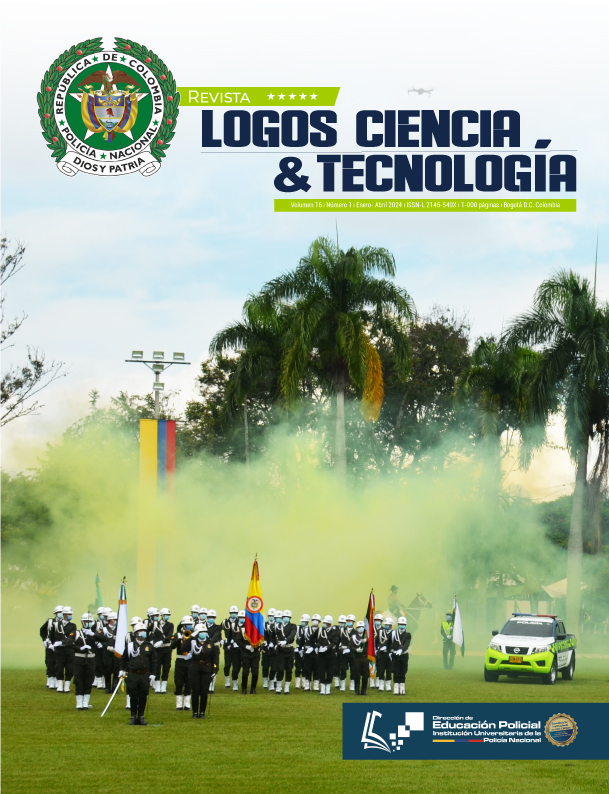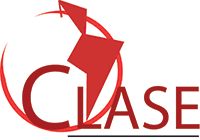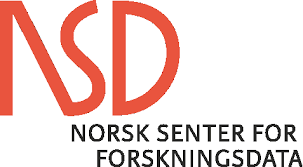Regulatory unpredictability in international law with respect to lethal autonomous lethal weapon systems
DOI:
https://doi.org/10.22335/rlct.v16i1.1875Keywords:
LAWs, IA, international humanitarian lawAbstract
The lethal autonomous weapon systems -LAW- are cybernetic entities capable of selecting and attacking targets without direct human intervention, supported by Artificial Intelligence -AI-, as opposed to conventional weapons, which are controlled by human beings. The objective of this research is to externalise the legal incompatibility of LAWs with respect to the principles of precaution, proportionality and distinction inserted in International Humanitarian Law that have been configured only for human beings as well as to identify the evident moratorium to filter/optimise -as a new weapon- the current critical use of these systems, evidencing the lack of international criminal power that emerges normatively as a result of the indistinction of technological malice, and the need to configure impartiality in the veto power of the substantial decisions regarding peaceful or non-peaceful settlements of the UN Security Council, as a result of their contemporary legal unpredictability. The conclusions aver that a permanent jurisdiction and universal competence are indispensable for their applicability, which should be governed by a potential international instrument regulating the use of LAWs in correlation with the applicable customary norms.
Downloads
References
Almache Barreiro, J. C., & Albert Márquez, J. (2023). Implicaciones éticas de la IA y su potencial impacto en el derecho internacional. Revista San Gregorio, 1(54), 209-231. https://acortar.link/vbUaW4
Arkin, R. (2009). Governing lethal behavior in autonomous robot. Mobile Robot Laboratory. College of Computing. Georgia Institute of Technology. https://acortar.link/R1iGyM
Barrat, J. (2013). Our final invention: Artificial intelligence and the end of the human era. Thomas Dunne Books.
BBC News. (2023a, 2 de septiembre). “Ataques con drones en Rusia: qué objetivos tienen y cómo se han convertido en una herramienta clave para Ucrania”. Redacción, BBC News Mundo. https://www.bbc.com/mundo/articles/c9ej4xr8n78o
BBC News. (2023b, 30 de septiembre). “El violento eco que tiene la guerra de Gaza en Cisjordania, el otro territorio palestino en el que han muerto más de 100 personas”. Redacción, BBC News Mundo. https://www.bbc.com/mundo/articles/c6plyyxwy2jo
Boyle, M. (2017). Legal and ethical implications of drone warfare. Routledge.
Campaign to stop killer robots. (2017). Slaugtherbots. https://www.youtube.com/watch?v=HipTO_7mUOw
Chávez, D., Cruz, A., & Herrera, P. (2019). Robots asesinos: ¿realidad o ficción? Los sistemas de armas autónomas en el marco del Derecho Internacional Humanitario. USFQ Law Review, 6(1), 11-28. https://revistas.usfq.edu.ec/index.php/lawreview/article/view/1405/1616
Comité Internacional de la Cruz Roja. (2016). Los sistemas de armas autónomos y el derecho internacional humanitario. https://www.icrc.org/es/doc/assets/files/2016/icrc-002-4173.pdf
Comité Internacional de la Cruz Roja. (2022). Preguntas y respuestas: Lo que hay que saber sobre las armas autónomas. https://www.icrc.org/es/document/preguntas-yrespuestas-sobre-armas-autonomas
Comité Internacional de la Cruz Roja. (1980). Convención sobre prohibiciones o restricciones del empleo de ciertas armas convencionales que puedan considerarse excesivamente nocivas o de efectos indiscriminados https://www.icrc.org/es/doc/resources/documents/misc/5tdl6d.htm
Comisión Internacional de Juristas (2014). Derecho internacional y Lucha contra la impunidad. https://acortar.link/e7Ixkm
Gómez, E. (2008). Manual de Derecho Penal Ecuatoriano. Ediciones Legales. Quito, Ecuador. https://acortar.link/TqlgPY
Heyns, C. (2013). Report of the Special Rapporteur on extrajudicial, summary or arbitrary executions. United Nations General Assembly. https://www.ohchr.org/en/special-procedures/sr-executions
Heyns, C. (2016). Autonomous weapon systems: Human rights and ethical issues. Meeting of High Contracting Parties to the Convention on Certain Conventional Weapons. https://acortar.link/wu5z40
Human Rights Watch. (2012). Losing humanity: The case against killer robots. https://www.hrw.org/report/2012/11/19/losinghumanity/case-against-killer-robots
Human Rights Watch. (2013). Unmanned: The impact of drone strikes in Pakistan. https://www.hrw.org/report/2013/10/22/unmanned/impact-drone-strikes-pakistan
Meza, M. (2019). El desarrollo y el uso de los sistemas de armas autónomas letales en los conflictos armados internacionales. [Tesis Doctoral]. Universidad de Barcelona. https://www.tdx.cat/handle/10803/668711
Nisa Ávila, J. (2016). Robótica e inteligencia artificial ¿legislación social o nuevo ordenamiento jurídico? Elderecho.com. https://elderecho.com/robotica-einteligencia-artificial-legislacion-social-onuevo-ordenamiento-juridico
Paul, T. V. (2010). Taboo or tradition? The non-use of nuclear weapons in world politics. Review of International Studies, 36(4), 853–863, https://doi.org/10.1017/S0260210510001336
Scharre, P. (2016). Autonomous Weapons and Operational Risk Ethical Autonomy Project. Center for a New American Security. https://acortar.link/bIpFub
Schmitt, M. N. (2017). Tallinn Manual 2.0 on the International Law applicable to cyber operations. Cambridge University Press. https://doi.org/10.1017/9781316822524
Serrano, A. (2016). Inteligencia artificial. Fundamentos, práctica y aplicaciones. México. Alfaomega.
Tegmark, M. (2018). Vida 3.0. Ser humano en la era de la inteligencia artificial. Taurus.
Documentos normativos referenciados
Carta de las Naciones Unidas (1945). https://www.un.org/es/about-us/un-charter
Centro Europeo de Postgrado Magazine. (2023). https://www.ceupe.com/blog/firmware.html?dt=1697744382649
Convenio de Ginebra. (1949). https://www.icrc.org/es/doc/assets/files/publications/convenios-gva-esp-2012.pdf
Convención de Ginebra (1977). Protocolo I adicional a los convenios de Ginebra de 1949 relativo a la protección de las víctimas de los conflictos armados internacionales. https://www.icrc.org/es/document/protocoloi-adicional-convenios-ginebra-1949-proteccion-victimas-conflictos-armadosinternacionales-1977
Convención de La Haya de 1899 relativo a las leyes y costumbres de la guerra terrestre. (1899). https://www.icrc.org/es/doc/resources/documents/misc/5tdlcy.htm
Convención sobre ciertas armas convencionales ante el Grupo de Expertos Gubernamentales sobre SAAL en Ginebra (2021). https://acortar.link/CVnMyG
Convención sobre la prohibición de armas bacteriológicas y sobre su destrucción. (1972). https://www.icrc.org/es/doc/resources/documents/misc/treaty-1972-bacteriological-weapons-convention-5tdm6y.htm
Convención sobre la prohibición de las minas antipersonal y sobre su destrucción. (1997). https://www.icrc.org/es/doc/assets/files/other/1997_minas.pdf
Corte de Derecho Internacional Humanitario. Caso Ximenes Lopes vs. Brasil. Sentencia de 4 de julio de 2006, Serie C No. 164, párr. 179; Caso Baldeón García vs. Perú, párr. 96; Caso de la Masacre de Pueblo Bello vs. Colombia, párr. 177, y Caso de la Masacre de Mapiripán vs. Colombia, parr. 224).
Estatuto de Roma de la Corte Penal Internacional. (1998). https://www.un.org/spanish/law/icc/statute/spanish/rome_statute(s).pdf
Directiva 2000/31/CE del Parlamento Europeo y del Consejo. (2000). Relativa a determinados aspectos jurídicos de los servicios de la sociedad de la información, en particular el comercio electrónico en el mercado interior (Directiva sobre el comercio electrónico) https://www.boe.es/buscar/doc.php?id=DOUE-L-2000-81295
Grupo de Expertos Gubernamentales de las Naciones Unidas sobre Sistemas Autónomos Letales. (2019). Informe de la reunión de expertos sobre sistemas de armas autónomas letales y la perspectiva del derecho internacional humanitario. Organización de las Naciones Unidas. https://undocs.org/en/CCW/GGE.1/2019/WP.5
Informe del Relator Especial de Naciones Unidas sobre ejecuciones extrajudiciales, sumarias y arbitrarias del 19 de febrero de 2007. A/HRC/4/20/Add2, párrs. 45 y 46. https://www.acnur.org/fileadmin/Documentos/BDL/2007/5017.pdf
Instruction number 85001.01, March 14, 2014. Cybersecurity – Departamento de Defensa, Estados Unidos de Norteamérica. https://nsarchive.gwu.edu/document/21382-document-23
Naciones Unidas. (2021). Informe final del Grupo de Expertos sobre Libia establecido en virtud de la resolución 1973 (2011) del Consejo de Seguridad. (2021). S/2021/229. https://digitallibrary.un.org/record/3905159?ln=es
Naciones Unidas. (2004). Opinión señalada por el Grupo de Alto Nivel en el informe enviado el 1 de diciembre de 2004 al Secretario General de Naciones Unidas, con el título “Un mundo más seguro: la responsabilidad que compartimos” (Doc. A/59/565). https://www2.ohchr.org/spanish/bodies/hrcouncil/docs/gaA.59.565_Sp.pdf
Parlamento Europeo. (2023). https://www.europarl.europa.eu/doceo/document/TA-9-2023-0236_ES.html
Proyecto de ley H. Res. 153. (2019). Supporting the development of guidelines for ethical development of artificial intelligence. https://www.congress.gov/bill/116th-congress/house-resolution/153/text
Propuesta del Reglamento del Parlamento Europeo y del Consejo. (2021). “Por el que se establecen normas armonizadas en materia de inteligencia artificial (Ley de Inteligencia Artificial) y se modifican determinados actos legislativos de la Unión”. Bruselas, Bélgica. https://acortar.link/1S4Wr3
Protocolo Adicional I al Convenio de Ginebra. (1977). https://www.icrc.org/es/document/protocolo-i-adicional-convenios-ginebra-1949-proteccion-victimas-conflictosarmados-internacionales-1977
Protocolo Adicional II al Convenio de Ginebra. (1977). https://www.icrc.org/es/doc/assets/files/publications/icrc-003-0321.pdf
Protocolo Adicional III al Convenio de Ginebra. (2005) https://www.icrc.org/es/doc/resources/documents/misc/protocolo-iii.htm
Protocolo Adicional IV a la Convención sobre Ciertas Armas Convencionales de 1980 (1995). https://www.icrc.org/es/doc/resources/documents/misc/treaty-1980-cccw-protocol-4-7ufmdw.htm
Protocolo de Estambul (1999). https://www.ohchr.org/sites/default/files/documents/publications/training8rev1sp.pdf
Regulación 306/15. (2015). “Proyecto piloto para el testeo de vehículos autónomos de Canadá”. https://www.ontario.ca/laws/regulation/r15306
Downloads
Published
Issue
Section
Categories
License
Copyright (c) 2024 Revista Logos Ciencia & Tecnología

This work is licensed under a Creative Commons Attribution-NonCommercial-NoDerivatives 4.0 International License.
This journal provides free and immediate access to its content (https://creativecommons.org/licenses/by/4.0/legalcode#languages), under the principle that making research available to the public free of charge supports greater global knowledge exchange. This means that the authors transfer the Copyrights to the journal, so that the material can be copied and distributed by any means, as long as the authors’ recognition is maintained, and the articles are not commercially used or modified in any way.
































